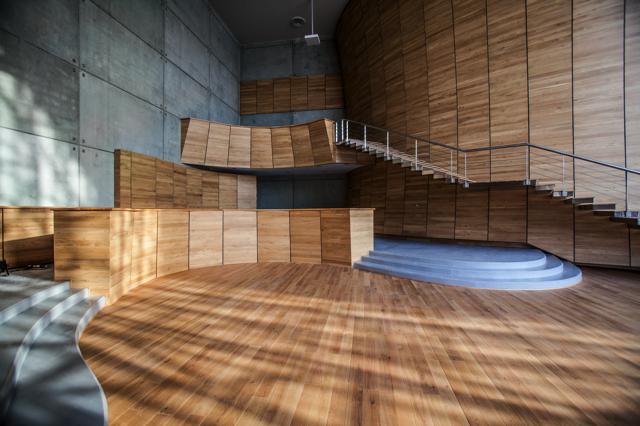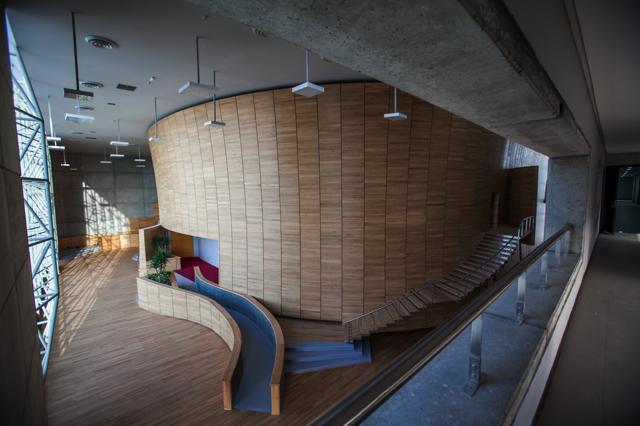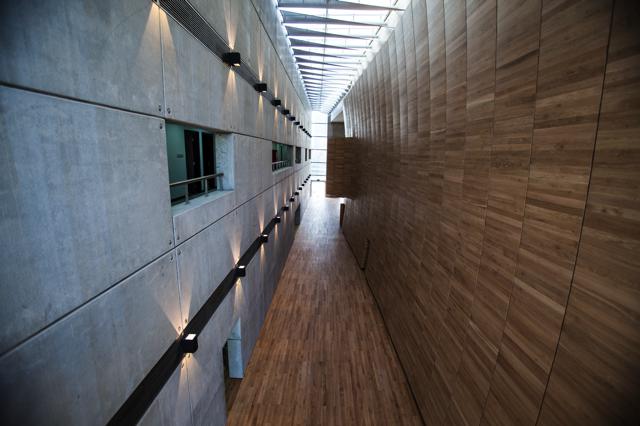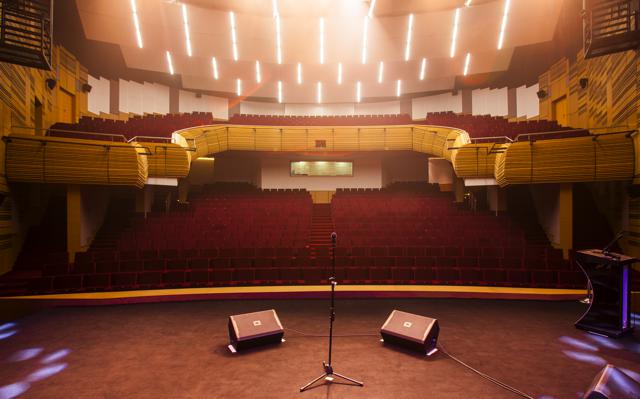It’s always great to hear from “interviewees past” to see what new and exciting projects they’re working on. In the case of one, Dawood Al Qattan, there’s always something incredible in the making, it’s just a matter of keeping up. So in an effort to catch up with the latest architectural news, we contacted Dawood, principal of Qattan Architects, to discuss his latest venture, the Salmiyah Theater. Reintroducing the concept of all things theatrical, the National Council for Culture, Arts, and Letters (NCCAL) has commissioned Qattan Architects back in 2006 to imagine a theater in the heart of Salmiyah. Fast forward several years later, construction began and the theater is now officially open.

When Engineer Ali Al-Youha inspected the performing arts scene in Kuwait, he had an epiphany; standalone theaters haven’t been built in Kuwait circa 1960. The need for a stage to house the performing arts scene was quickly growing, and the idea was born. Eng. Ali Al-Youha, head of the Engineering Department at the time of inception in the NCCAL, started planning such a place. The theater, being independent, isn’t affiliated to any Cooperative or as part of a larger complex; that’s what makes it different from other theaters in the country. Another notable difference is that it will serve primarily as a performing arts theater and all other uses will be secondary. Dawood made that perfectly clear with the setup of the interior. “The acoustics are designed well enough not to require amplification,” Dawood states. They have, although, fully equipped the theater with state-of-the-art speakers, amplifiers, and recording equipment for productions to use as they please.

As for the seating, the audience layout was conceptualized brilliantly to completely immerse theatergoers with a sense of mutual perception. That being essential to those in attendance of the live performing arts, the seating is created to emulate the shape of a horseshoe, and the sections parabolic, which ensures the best experience possible. Finding the actual plot of land proved trickier than anticipated. With limited options to house the theater, the NCCAL decided on the plot near the NBK and Geant supermarket due to it’s proximity to heavily populated residential spaces. Luckily, the plot was theater size appropriate as well, giving them the opportunity to build the perfectly engineered structure. With the revival of the theater scene in Kuwait, the Salmiyah Theater will enhance the existing scene and become accessible to all. “It’s still not on par with the theater scene as it was in the 60’s and 70’s,” Dawood adds, but he’s hopeful that a more concerted effort will be made by both government and private sectors to absorb the public in the arts and culture scene. Sophisticated playwrights like Sulaiman Al-Bassam and Abdullah Al-Turkomani are currently making strong debuts, and in this theater will give many others the opportunity to create pieces worthy of a stage.

What caught our attention here at bazaar HQ is the design of the building itself. We asked Dawood to explain the aesthetics behind the architectural plans and how the idea for the design came about. “In principal, the local environment’s high temperatures, unforgiving sun, and the need for low maintenance drove the design. The external shell is made of untreated precast concrete panels, 3.2m by 2m in size; this proportion approaches the golden ratio and is found throughout the building. External openings are kept to a minimum, except for the elevation facing the main street. The lobby and the wall encasing the auditorium are treated with high-performance parquet while the rest of the walls are the same, untreated concrete, blurring the boundaries between the inside and the outside. The auditorium shape corresponds to the soft wood feel with a fluid shape versus the strong tectonic grid set by the concrete panels. All together, this amounts to a building within a building, whereas the internal structure spills into the landscape by both shape and light. The theater is also fully digitized with a motorized rigging system, entirely operable from a smartphone or any other device,” he explains.
Dawood continues, “The glazing on the main elevation is fitted with ceramic dots to diffuse sunlight and act as a screen for a projector located opposite the building. The idea is that when there is a performance, which is free anyway, it will be projected onto the main façade and people can enjoy it from the landscaped area; this is also a means of bringing theater to the masses.” Reminiscent of the much loved free opera screenings in Trafalgar Square, London, if you can’t go into the theater, the theater will come out to you. Not affiliated with any theater company, the Salmiyah Theater is completely free of charge and promises to entertain the public whether you’re in the theater proper, or enjoying the currently glorious weather outside. Thespians rejoice, the National Council for Culture, Arts, and Letters has created a space with you in mind.
For more information on the Salmiyah Theater, you can contact the NCCAL or head to the theater proper located on Hamad Al-Mubarak Street next to NBK.











